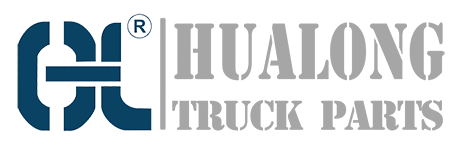What Is a Hydraulic Lift?
A hydraulic lift, also known as a hydraulic elevator or a lift, is a mechanism that uses fluid power to move heavy objects vertically. The fluid power is usually provided by an electric pump that pressurizes hydraulic fluid, which is then used to move the lift's piston up and down. Hydraulic lifts are commonly used in automotive repair shops, warehouses, factories, and other industrial settings where heavy loads need to be lifted and moved.
How Does a Hydraulic Lift Work?
The basic principle behind a hydraulic lift is Pascal's Law, which states that pressure applied to a fluid in a closed system is transmitted equally to all parts of the system. In a hydraulic lift, the fluid is usually oil, and it is contained in a closed cylinder. When the electric pump forces oil into the cylinder, it increases the pressure inside, causing the piston to rise. This motion is used to lift the heavy object, which can be attached to the piston or the platform above it.
What Are the Types of Hydraulic Lifts?
There are several types of hydraulic lifts that are designed for different applications. The most common types are:
- Scissor lifts: these lifts have a platform that can be raised and lowered by a set of crisscrossing metal supports.
- Telescoping lifts: these lifts have multiple sections that can be extended and retracted to reach different heights.
- Cantilever lifts: these lifts have a single support column and an arm that extends horizontally to lift the load.
- Vertical reciprocating conveyors: these lifts are designed to move cargo between different levels in a warehouse or factory.
What Are the Advantages of Hydraulic Lifts?
Hydraulic lifts have several advantages over other types of lifting mechanisms:
- They are more efficient and can lift heavier loads than mechanical lifts.
- They are quieter and smoother during operation, which is important when lifting fragile objects.
- They require less maintenance and have a longer lifespan than other lifts.
- They are more versatile and can be used in a wide range of applications.
- They are safer to use because they do not use electricity directly, and they have fail-safe mechanisms that prevent accidents.
What Are the Applications of Hydraulic Lifts?
Hydraulic lifts are used in many different industries and settings, including:
- Automotive repair shops: hydraulic lifts are used to raise and lower cars and trucks for repair and maintenance.
- Warehouses and factories: hydraulic lifts are used to move heavy equipment and supplies between different levels.
- Construction sites: hydraulic lifts are used to lift and position heavy materials and equipment.
- Hospitals and nursing homes: hydraulic lifts are used to transfer patients between beds, chairs, and other surfaces.
- Stage productions: hydraulic lifts are used to raise and lower props and performers during shows.
What Are the Safety Precautions for Hydraulic Lifts?
Hydraulic lifts are generally safe to use, but there are several precautions that must be taken to prevent accidents:
- Follow the manufacturer's instructions for operation and maintenance.
- Regularly inspect the lift for signs of wear or damage.
- Ensure that the lift is properly maintained and lubricated.
- Keep the area around the lift clear of debris and obstructions.
- Use the lift only for its intended purpose and within its weight capacity.
- Provide adequate training to operators and employees.
- Have a safety plan in place in case of emergencies.
What Is the Cost of a Hydraulic Lift?
The cost of a hydraulic lift varies depending on the type, size, and capacity of the lift, as well as the manufacturer and supplier. On average, a hydraulic lift can cost anywhere from a few thousand dollars to tens of thousands of dollars. However, this cost is usually offset by the lift's efficiency, versatility, and durability.
What Are the Maintenance Requirements for Hydraulic Lifts?
Hydraulic lifts require regular maintenance to ensure their safe and efficient operation. The maintenance requirements may include:
- Regular inspections of the lift's components, including the pump, valve, cylinder, and piston.
- Lubrication of the lift's moving parts.
- Replacement of worn or damaged parts.
- Testing of the lift's safety features, including the emergency stop and overload protection.
- Cleaning of the lift's hydraulic fluid to remove contaminants and debris.
How Can You Choose the Right Hydraulic Lift?
Choosing the right hydraulic lift depends on your specific needs and requirements. Some factors to consider include:
- The weight and size of the load to be lifted.
- The height and distance that the load needs to be moved.
- The available space and layout of the workspace.
- The intended application and frequency of use.
- The budget and cost-effectiveness of the lift.

